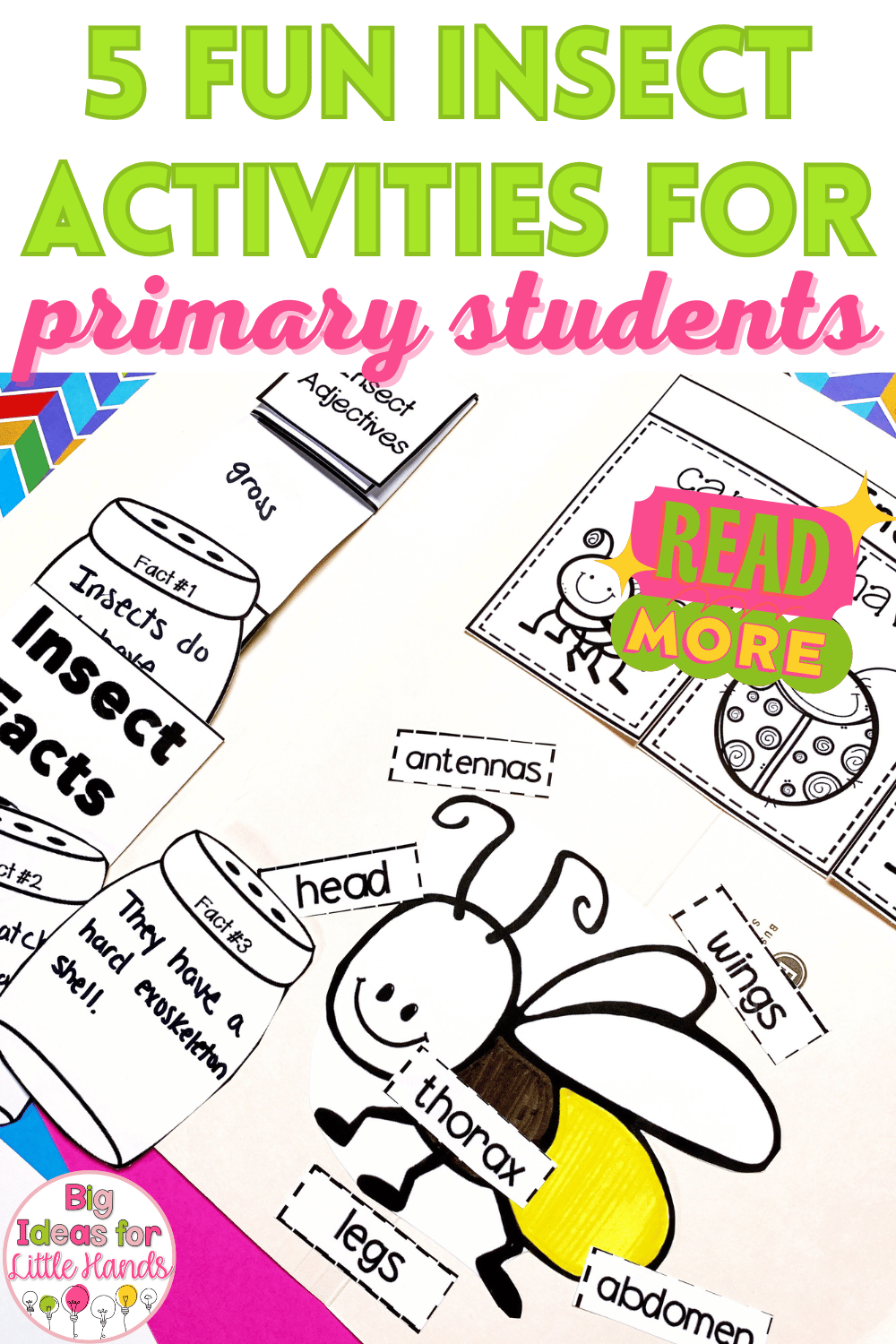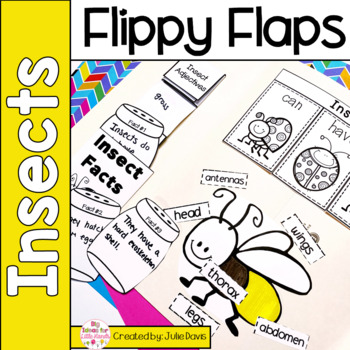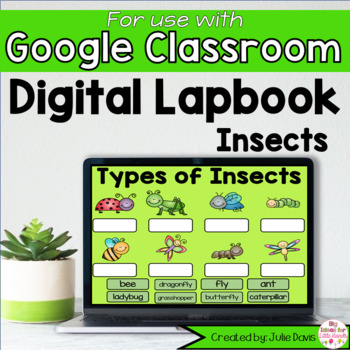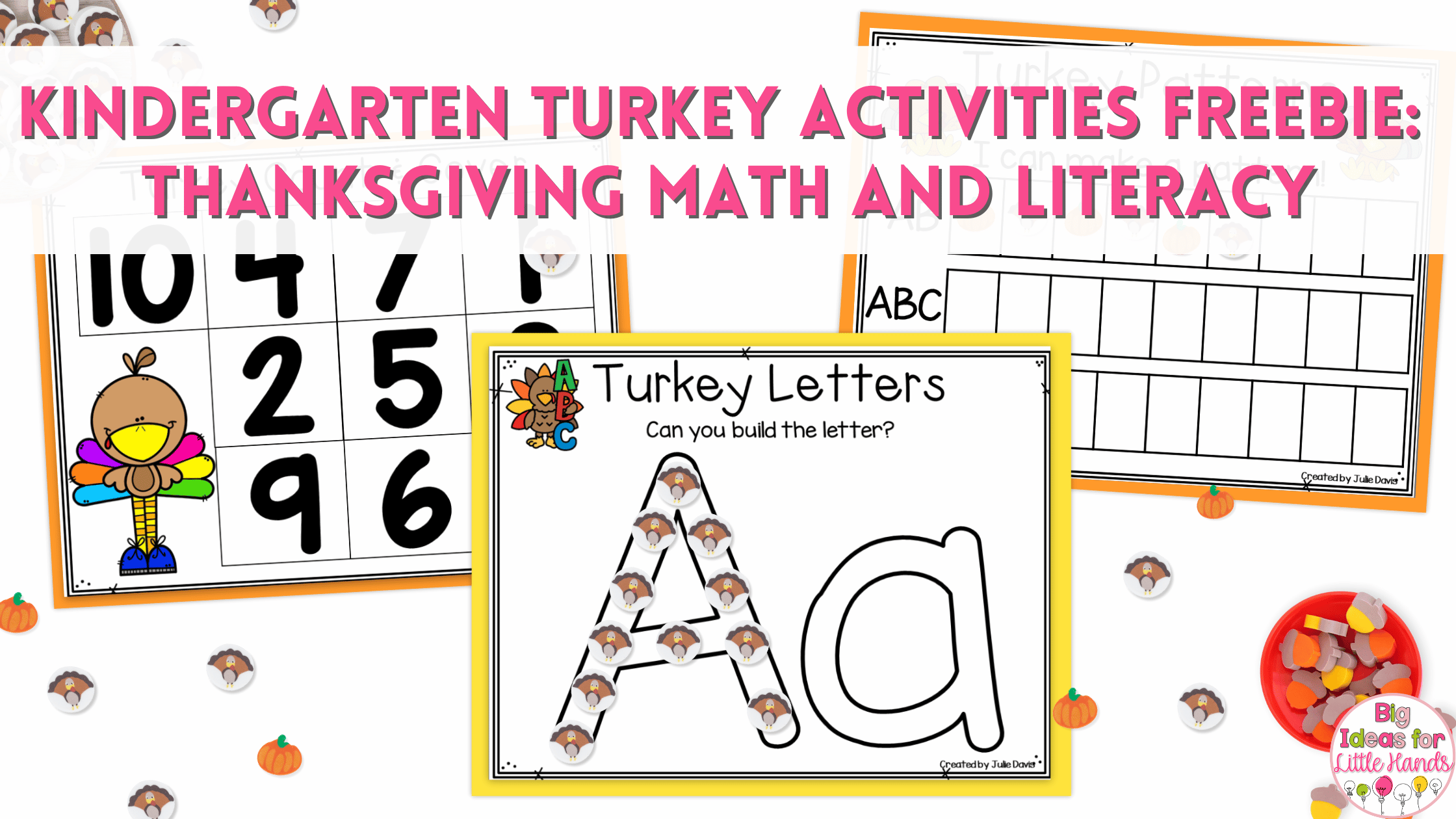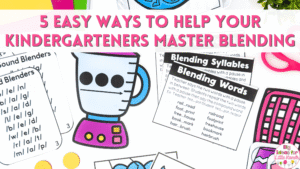They’re creepy, they’re crawly, and our young students sure do love them! I’m talking about insects, of course! I don’t know about you, but my students never fail to find a crawling beetle on the sidewalk or a buzzing fly in our classroom. And they always have to stop and inspect them. Harness their natural curiosity with these 5 fun insect activities for primary students!
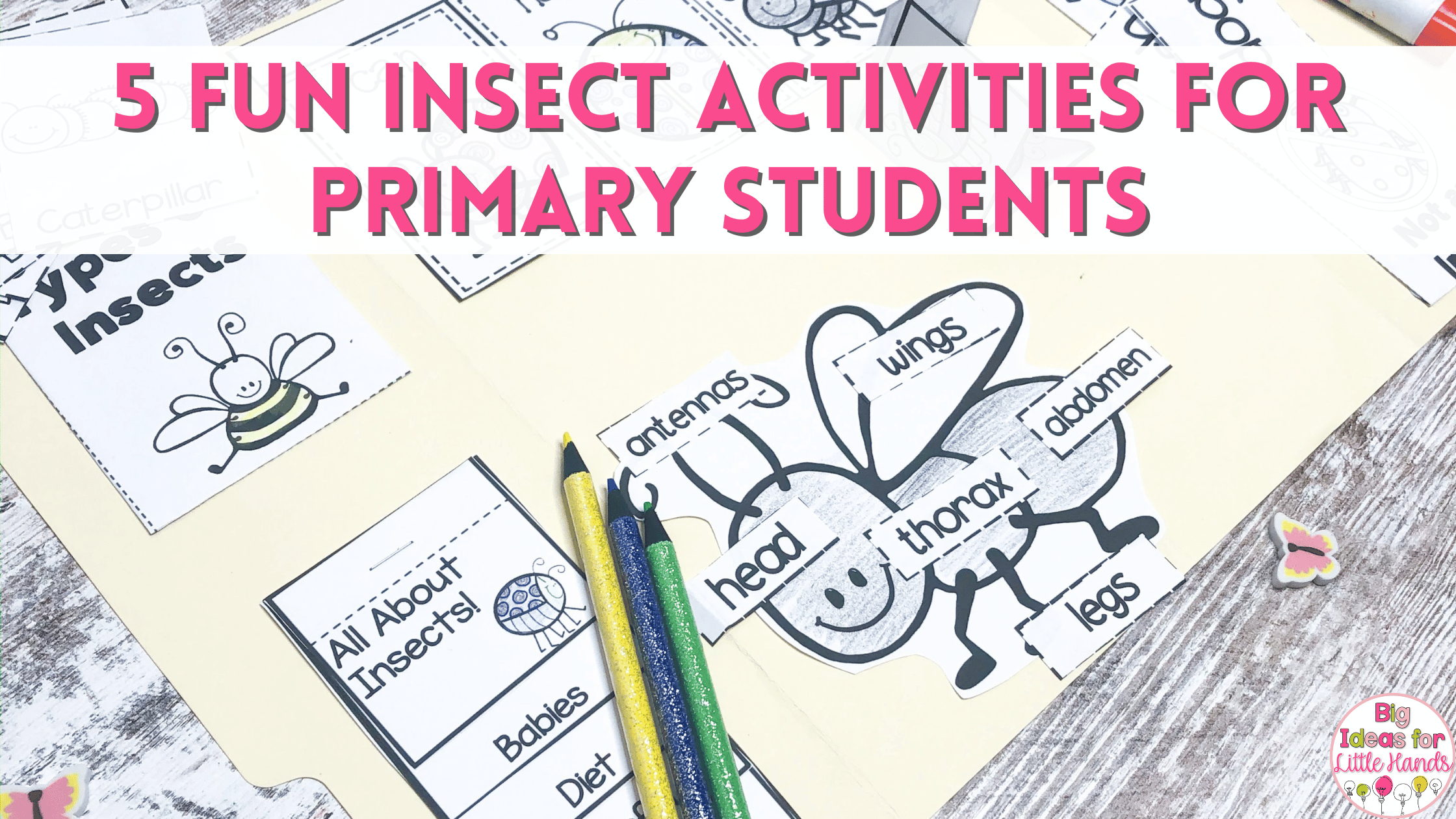
I love thematic units that involve science and my students’ innate curiosity, so studying insects is a favorite of mine. But how do you make sure you do such a large topic justice while keeping your students engaged? Lapbooks are a great answer to that question! Here’s everything you need to know to use these lapbook and insect activities in your classroom, too!
Using Lapbooks in Your Classroom

Lapbooks are a great way to tackle themed studies in your classroom.
The idea behind lapbooks is that they act as mini interactive notebooks for your students, making them the perfect choice when deciding on insect activities for your classroom!
You can easily complete and contain a multitude of activities in a lapbook. No more reason to have bin upon bin of themed materials.
Your students will have everything they need in one neat file folder. Plus, at the end of your unit, they have a keepsake to bring home and share with their families to show off what they have learned!
Want to learn more about using lapbooks in your classroom? Check out this blog post!
Getting Your Lapbook Ready
Lapbooks are simple yet effective projects that will be a game-changer in your classroom. It just takes a little bit of preparation and a few materials. You most likely already have on hand everything you need to create the perfect insect lapbook! Here are a few things you will need to get started.
- Manila file folders
- colored pencils or crayons
- glue
- scissors
- print outs for the lesson OR the insect lapbook activities resource
That’s it! Super simple, and once you have everything together, you are ready to jump right in!
If your students are new to lapbooks, you might want to pre-fold the folders, or at least start the process of teaching them how. There are just 3 easy steps to getting the folders ready.

After you do a couple as a class, your students will be able to prep their own folders!
Getting Started on Your Insect Lapbook for Preschoolers
As we know, our young students tend to have an affinity for all things that crawl, wiggle, and buzz around.

So, I love using lapbook activities to explore their natural curiosity further. When introducing our insect activities, I always start by taking my students outside so that they can get up close and personal with our topic: insects!
I give each student a small magnifying glass and some visuals of different insects, and then let them explore!
I love seeing how excited they get when they find one. Usually, the class will rush over and take turns with their magnifying glasses to get a closer look. Once we have spent some time examining our subject of study, we head back inside and talk about the insects that they found. I probe them about the features they noticed on the insects they saw, where the insects were, what they were doing, etc.
From here, we jump into the engaging insect activities that will make up our lapbook! Here are a few of my favorites!
1. Types of Insects
Typically, after our insect exploration outing, I begin with this Types of Insects activity. I start by creating a list on our board of all the insects that they found.
Next, I pass out the sheet with the insect examples. We see if any insects are missing from our list. Then, students color each of the insects.
Finally, we cut out the examples, attach the Types of Insects pocket to their lapbook, and store them in the pocket for use later.
2. All About Insects
Once students have some concrete examples of what insects are, we move on to the All About Insects activity. This is when we focus on facts about insects, such as their diet, babies, habitat, how they are helpful, and different types of insects.
For this activity, we cut out flaps for each of the areas that we are going to discuss, and I have them start with the flap labeled “Types”. I start with this one first because it is a great way for me to gauge if they remember our discussion from the Types of Insects activity. If students are struggling to come up with types of insects, I show them how to go back to their lapbook and use our previous activity as a resource. This is a great teachable moment and shows students how they can use resources to help them!
Then I typically show students a short video on insects and have them listen for information about each of the other topics. After the video is done, I pick one of the topics, such as diet, and they discuss their ideas with a partner. We come together as a class and make a final list for that topic, and add the ideas to the flap. For the next topic, they switch partners and again talk about what they heard in the video, and then we repeat the process until all of the topics are filled out.
For the final step, they do a little coloring and then glue their completed flipbook into the lapbook.
3. Insect/Not an Insect Sort
With their lapbook now filled with information about insects, I introduce one of my favorite insect activities, the Insect / Not an Insect Sort.
Before we jump into setting up the sort, I set up a fun game show-style activity for students called Insect or Not. I pair up students as a team and give them paddles with a picture of an insect and then a picture of an insect with the “do not” sign over the image, so that they can easily answer the questions with visuals, making this a fun and fast-paced activity.
I pull up images of insects and other animals/items. Pairs decide on insect or not and then hold up the correct paddle. This is a great way for me to see which students might need more practice with the characteristics of insects simply by looking at the paddles they hold up. This also takes the pressure off one group answering and potentially being wrong in front of the class. For each image, I reveal if it is an insect or not and explain why. If you have students who could use more of a challenge, you can ask one of the pairs to explain why it is or is not an insect.
Once we have wrapped up our game show, students go back to their desks and grab their lapbooks. I pass out the Insect/Not an Insect Sort. Students cut out the two pockets (one for insects and one for non-insects) and attach them to their lapbook. They then cut out each of the images and practice sorting them. I walk around during this time to answer questions and check in on student understanding.
4. Label an Insect
Finally, I like to wrap up our insect activities with the Label an Insect activity. This activity is great for introducing vocabulary and is hands-on as students get to use each of the cutout words to label an insect diagram.
I start the activity by inviting students to be the little scientists that they are! I bring in a collection of real insects preserved in resin for us to take a closer look at together. Each student is given a magnifying glass and an observation sheet.
Students rotate through each of the preserved insects and draw different parts that they see and mark parts they think are the same between insects. We then come together and talk about what they saw. I pull up a generic bug diagram and introduce each of the parts and what they are named.
From here, students get their own insect diagram that they will label. They glue it into their lapbook, color it, and then add each term to the correct spot.
5. Insects Can/Have/Are
After students have learned about different types of insects and key facts about them, I like to do an Insects Can/Have/Are summarizing activity.
First, I have students open up their lapbooks and look at the other activities we have completed. I ask them to brainstorm something insects can do, something they can have, and something they are. For example, insects can fly, insects have antennas, and insects are pollinators. I have a large piece of chart paper broken into each category where I write down their ideas.
Then we take the activity one step further. I place photos of different insects around the room, as well as a few tablets with videos about insects. Students rotate around to the photos and visuals to gather more information about what insects can, have, and are.
At the end, we come together, they share their ideas, and I update the list on the large chart paper. Finally, students pick 3 facts from each category to add to the flaps of the lapbook activity. It is a great way to test their knowledge and wrap up the week of learning.
More Fun Insect Activities. . .
You don’t have to stop your insect activities with the five listed above. Depending on the skills my students are working on, I often add additional activities to our insect unit.
Here are a few more of my favorite activities from the Insects Lapbook activities set:
- Insect Adjectives
- Insects KWL
- My New Bug activity
- Insect Vocabulary
- Life Cycle of an Insect
- Insect Fact Jars
- Compare Insect/Bird
- Compare Insect/Arachnid
- My Favorite Insect Is…writing prompt
- If I Had a Pet Insect…writing prompt
- Which Insect Would You Want To Be…writing prompt
- Favorite Insects Class Graph
Use these insect activities to immerse your students in a fun and engaging insect experience. By the end of your unit, your class will be insect experts for sure!
Digital Insect Lapbooks
Looking for even more insect activities? You’re in luck! I made a digital version of these insect lapbooks, too! These are the perfect option if you’re looking for a way to integrate technology into your lessons, or like to use your SmartBoard for whole-group teaching.
The digital option includes many of the same activities and topics, but instead of using paper lapbooks, students will use the drag-and-drop features in Google Slides to record their answers. This makes it a great tool for whole group learning, digital homework assignments, at-home learning days, and even technology centers! It’s super easy to duplicate the file for each student in your room, or reset it and use it over and over as a center activity.
In my room, I like to project the digital lapbook slides for the whole class to see and complete them as a group. We talk through the topic, and then I call on students to come up and help record the correct answer. I love that this can be used for both teaching and review. It feels like a totally different activity from the paper lapbook, and yet you’re still working on learning about insects. Not to mention, it’s great for kids to work on using different kinds of technology tools, too!
Looking for Ready to Use Insect Activities?
You can find all of these insect activities for primary students in the Big Ideas for Little Hands store. These resources come in two versions. The printable version has everything you need to create a physical lapbook with your students. The digital version is a great way to incorporate some technology skills while still teaching and working on the same great science standards. I love to use them together during our insect unit. The digital activities are perfect for our whole class lessons, and then each student creates their own lapbook. It makes guided practice and independent practice so easy!
Looking for More Fun Science Lapbooks?
Check out these science lapbooks that are perfect for the primary classroom!
- 3 Fun and Engaging Weather Lapbook Activities
- Fun Dinosaur Lapbook Activities
- 8 Lapbook Plant Activities for Spring in Kindergarten
- Engaging Space Lapbook Activities Your Students Will Love
Save These Insect Activities
Make sure to save these insect activities to your favorite classroom Pinterest board! That way, when you decide to tackle an insect study, you will have everything you need.
